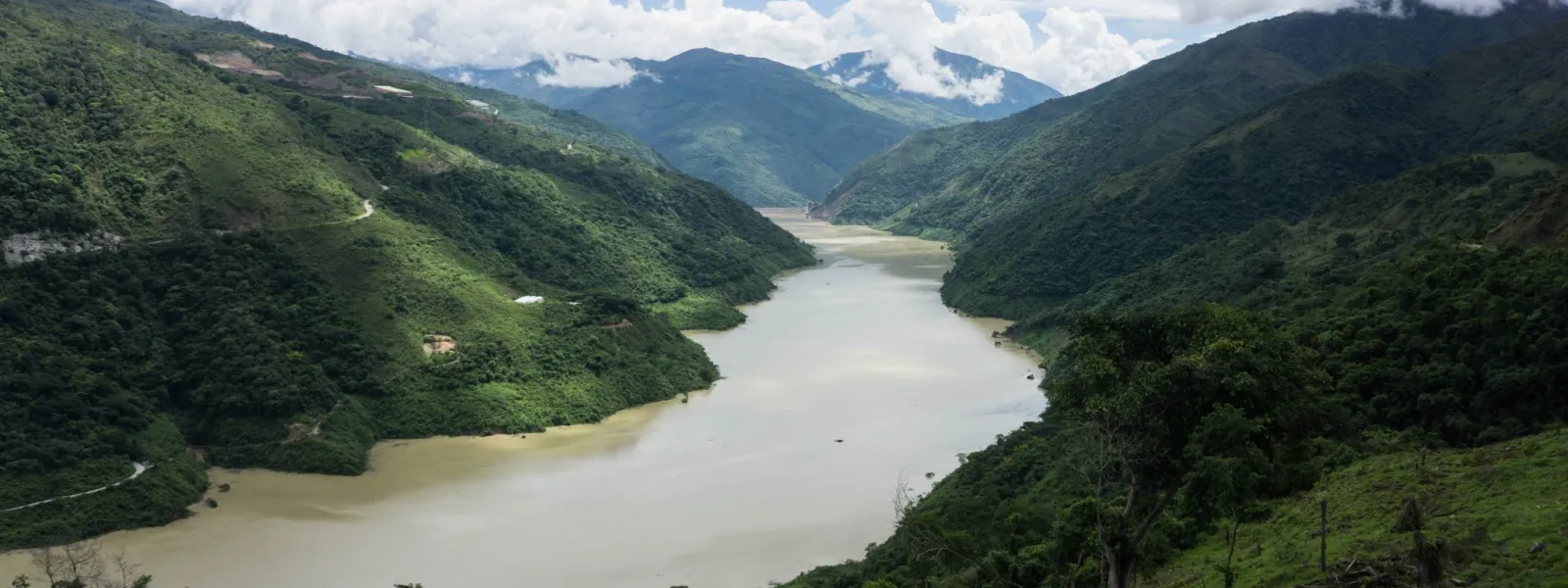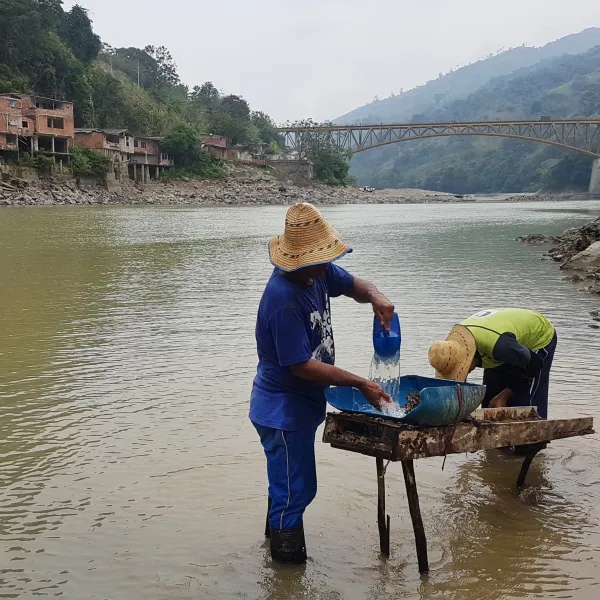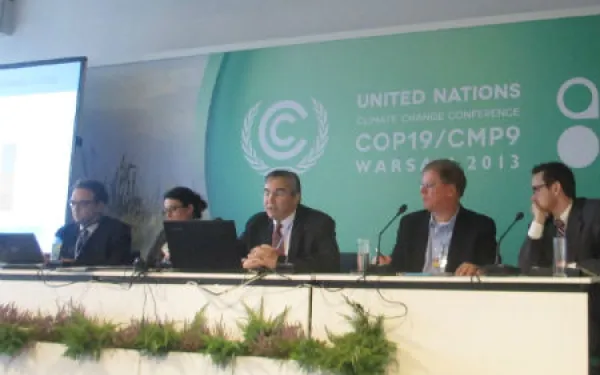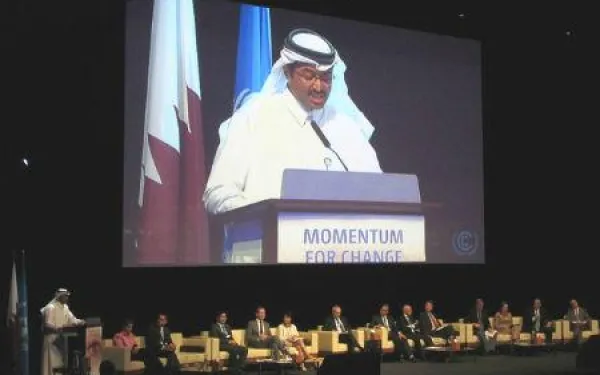
Project
Bram EbusSeeking justice for communities affected by the Hidroituango dam
The Cauca River is the second largest in Colombia. Many of the communities settled throughout its expansive watershed depend on the river for their livelihood, includingd fishing and agriculture.
Winding its way through the Andes mountains, the river courses through seven departments of Colombia, including Antioquia, now home to the Hidroituango Dam—a project that has created an unprecedented humanitarian crisis.
In May of 2018, an error in the dam’s construction caused floods, landslides, avalanches, and the evacuation of more than 25 thousand people. This tragedy exposed the inadequate evaluation of the project’s environmental impacts and the lack of environmental regulation in the dam’s authorization processes.
The project has led to systematic human rights violations, including the disproportionate use of force and an increase in violence against affected communities, who are represented by the Ríos Vivos (“Living Rivers”) Movement of Colombia.
Though construction is not complete, and electricity has not yet been generated, the dam has flooded more than 4,500 hectares of vegetation, releasing a significant amount of methane—a greenhouse gas that aggravates the global climate crisis.
And despite its inadequate implementation, IDB Invest, a private branch of the Inter-American Development Bank, invested millions of dollars into the hydroelectric project and facilitated the investment of billions more from other international banks.
Communities affected by Hidroituango have spent decades denouncing the serious problems caused by the dam, and will not waver in their struggle to defend their land and water.
Partners:

Related projects

The reduction of HFCs and methane emissions
By Andrea Rodríguez, legal advisor, AIDA, @arodriguezosuna, and Mónica Valtierra, AIDA volunteer Warsaw, Poland - The reduction of hydrofluorocarbons (HFCs) and methane gas emissions has enormous potential to help in the fight against climate change under the framework of the Montreal Protocol and through the development of clean technologies designed to reduce greenhouse gas emissions from refrigerants, air conditioners and vehicles. Mark W. Roberts, a senior counsel and international policy advisor at the Environmental Investigation Agency (EIA), made this point during Catalyzing Pre-2020 Mitigation Action – Phasing down HFCs and Reducing Methane Emissions event at the 19th Conference of the Parties (C0P19) to the United Nations Framework Convention on Climate Change (UNFCCC) in Warsaw, Poland. He reminded listeners that short-lived climate pollutants (SLCPs), which include HFCs and methane, may have a relatively short lifespan in the atmosphere but they have a global-warming potential (GWP)much greater than CO2. This means that action to reduce these particular pollutants will have substantial short-term climate benefits. Among the activities to reduce of HFCs we have the use of ammoniums, hydrocarbons, methyl formats and other technologies that involve the sustainable use of CO2. He also suggested the implementation of alternative manufacturing processes for aerosols and fiber materials, the use of dry powder for asthma inhalers and the use of solar energy for refrigeration and air conditioners. Roberts said the scope of the Montreal Protocol includes the reduction of 8 billion tonnes of CO2 since 1980, five times more than the goal established in the Kyoto Protocol between 2008 and 2012. The United States and Canada have proposed amendments to the Montreal Protocol that would help to dramatically reduce the consumption of HFCs, he added. Along the same vein, the representative of the United Nations Industrial Development Organization (UNIDO) mentioned the importance of implementing the Montreal Protocol for the global reduction of HFCs. With regard to financing mechanisms, he said the Global Environment Facility (GEF) could be an alternative for developing countries without access to the Multilateral Fund for the Implementation of the Montreal Protocol. He also highlighted UNIDO’s role in promoting new technologies based on ozone-friendly chemicals and improvements in manufacturing processes in developing countries. As an example of the latter, he cited a project in which 10 companies in the Philippines had reduced their use of HFCs by 10%. He also mentioned the recent launch of the Climate and Clean Air Coalition, which seeks to reduce HFCs emissions and put the reduction of SLCPs on the agenda. At the same time, Markus Kurdziel, a consultant for BMZ in Germany, spoke about projects the German government is working on with public agencies and the private sector for refrigerants, air conditioning and foam production. These projects are part of Proklima, a program supported by 40 countries with the following areas of action: political consulting, technology transfer, research, subsidies development, technological adaptation, emissions reduction and the implementation of bilateral strategies. As an example, Kurdziel mentioned projects in China and India where the governments there helped private companies in the manufacturing of air conditioners with 15% greater efficiency. In Brazil, the initiative implemented a program to recover and recycle refrigerators. Also at the event, representatives of the International United Steelworkers Union said U.S. natural gas networks were leaking a combined total of around 6 million cubic feet of gas because of old and deteriorated pipes. In response, David Foster of the Blue Green Alliance called for greater efforts to repair the pipes to prevent methane gas from escaping into the atmosphere, a project that he said would create millions of jobs in the United States. The event closed with a message. We must take action to reduce methane and HFCs emissions -- and we must do it now. For more information, see the document (in Spanish) about short-lived climate pollutants that AIDA, CEDHA, CEMDA and RedRacc presented at COP19.
Read more
Short-lived climate pollutants: An opportunity to reduce emissions
AIDA together with CEDHA, CEMDA and RedRacc have produced a briefing paper on short-lived climate pollutants (SLCPs) for presentation at the 19th Conference of the Parties (COP19) on climate change, which is running November 11 to 22 in Warsaw, Poland. SLCPs are agents that contribute to global warming and have a relatively short lifetime in the atmosphere, from a few days to a few decades. That’s different from CO2, which remains in the atmosphere for centuries or millennia after emission. CO2 contributes an estimated 55% to 60% to global warming, while the remaining 40-45% comes from the emission of SLCPs. The latter seriously affect human health and ecosystems, meaning that any reduction in their emissions also brings significant social benefits. The fact that these contaminants remain so little time in the atmosphere means that their mitigation brings short-term benefits, in particular to the most vulnerable regions of the world already suffering the impacts of climate change. We must seize the opportunity to reduce SLCPs in the fight against the effects of this global challenge. Our paper explains what SLCPs are, which are the most relevant ones, and what are the reasons we should work to regulate and reduce their emissions. The paper also provides recommendations for taking on the challenge. Read the Fact Sheet (in Spanish)
Read more
Can COP19 move the Green Climate Fund closer to reality?
By Andrea Rodríguez, AIDA's legal advisor, and Marcus Pearson, AIDA's volunteer (article published in Respond/RTCC Magazine) The Green Climate Fund was created as an effective response to the impacts of climate change by channeling financial resources from developed to developing countries. Will this happen? The Conference of the Parties in November will provide an opportunity for developing countries to lobby for significant financial commitments from the developed world to ensure the long-term viability of the GCF. The Green Climate Fund (GCF) was created in 2010 at the 16th Conference of the Parties (COP16) to the United Nations Framework Convention on Climate Change (UNFCCC). Its mission is to channel public and private financial resources to developing countries to help them mitigate and adapt to the impacts of climate change through low-emission and climate-resilient programs. But nearly four years later, the GCF has yet to disburse any funds. The GCF board has held four meetings with only limited results. At the first meeting in Geneva in August 2012, the board selected two interim co-chairs: Mr. Zaheer Fakir of South Africa and Mr. Ewen McDonald of Australia. It also formed committees, designated the World Bank as Interim Trustee, and agreed to invite observer organizations to participate, albeit in a restricted capacity. A lack of consensus stalled decisions at the October 2012 meeting in South Korea, where the only notable motion was making Songdo, South Korea the GCF’s headquarters. More advances came at the February 2013 meeting in Berlin. The board adopted procedural rules to govern its actions, regulate board member selection and define the participation and role of civil society observers. This laid the groundwork for the GCF to carry out its mission. At the June 2013 meeting in South Korea, the board then discussed the GCF’s business model framework (BMF) and the policies, guidelines and organizational structures needed to commence operations. The board also chose the governance structure of the private sector facility (PSF) [i] and appointed Ms. Hela Cheikhrouhou of Tunisia as executive director of the GCF Secretariat. The fifth meeting in Paris could address the many outstanding issues still needed to bring the GCF into effective operation. To do so, the Board must overcome its perceived ineffectiveness. Civil society concerns Civil society organizations (CSOs) are concerned about the GCF’s decision-making process and future. Perhaps the greatest issue is the uncertainty of funding. The GCF board has started to identify project areas and define criteria to allocate resources, but developed countries have yet to pledge meaningful funds. Concrete commitments are essential to ensuring the availability of predictable resources needed to achieve long-term results to mitigate and protect against the impacts of climate change. CSOs also fear that a lack of transparency and accountability will hamstring the GCF. Transparency does not seem to be a priority for the board. For example, the board has decided against webcasting its meetings even though the UNFCCC commonly does so, helping to cut costs and carbon emissions associated with travel. If the GCF already broadcasts meetings to observers in an overflow room, why not webcast? CSOs fear the board does not want to make its meetings open to the public. Lack of public accountability remains a concern particularly because of the small opportunity given to civil society to participate in the decision- making process. The GCF will mobilize financial resources from both public and private sectors, and civil society oversight is needed to ensure that policies do not respond to the investment interests of the private sector but to the needs of the most vulnerable. Moreover, the board is not granting CSOs meaningful opportunities for participation. The GCF publishes documents before meetings without sufficient time for many CSOs to review and comment on proposals[ii]. Meanwhile, only two CSO representatives may actively participate at board meetings in person and even so may not be allowed to talk or approach board members[iii]. These practices call into question the GCF’s legitimacy. Globally, CSOs play a vital role in developing climate change policy by informing decision makers about local issues and needs, and by providing examples of best practices for resource allocation. Given that the GCF stresses accountability in its mandate, CSOs should have access to government representatives and information in open and transparent meetings. COP19: An opportunity for the GCF? The COP19 this November in Warsaw will show the world whether the GCF can become an effective engine for climate change funding in developing countries. At this conference, developing countries must seek firm financial commitments for climate adaptation and mitigation. Only guaranteed funding will enable the board to make effective decisions regarding resource distribution or provide developing nations with a clear picture of how much funding is available. The GCF Board must also seek -- and receive -- guidance because many COP attendees will benefit from GCF resources. Countries can use the COP to provide advice on GCF policies, share their priority needs for funding, and recommend criteria to guarantee access to resources. The COP will also give CSO representatives a chance to raise questions and highlight counterproductive practices. Conclusions The COP presents a prime opportunity for developed nations to commit to the GCF’s stated goals and pledge desperately needed financing. Parties and CSOs must use the COP – GCF’s monitoring body – as a tool to improve GCF accountability, inclusivity and transparency so that the GCF can truly work to benefit vulnerable populations in developing countries. The COP should be a benchmark for advancing the GCF rather than just another event for developed countries to congratulate themselves on timorous steps forward. [i] The PSF will enable the GCF to directly and indirectly finance private sector mitigation and adaptation activities at the national, regional and international level. [ii] For the June meeting in South Korea, documents were published less than two weeks before the meeting, rather than 21 days as outlined in the additional rules of procedure decision taken in Berlin. [iii] As was the case on the last day of the meeting in Songdo.
Read more